This is a recipe for freshly baked rohliky, Czech favorite breakfast bread rolls. Made from yeast dough, these homemade rohliky are feather-light and melt in your mouth!
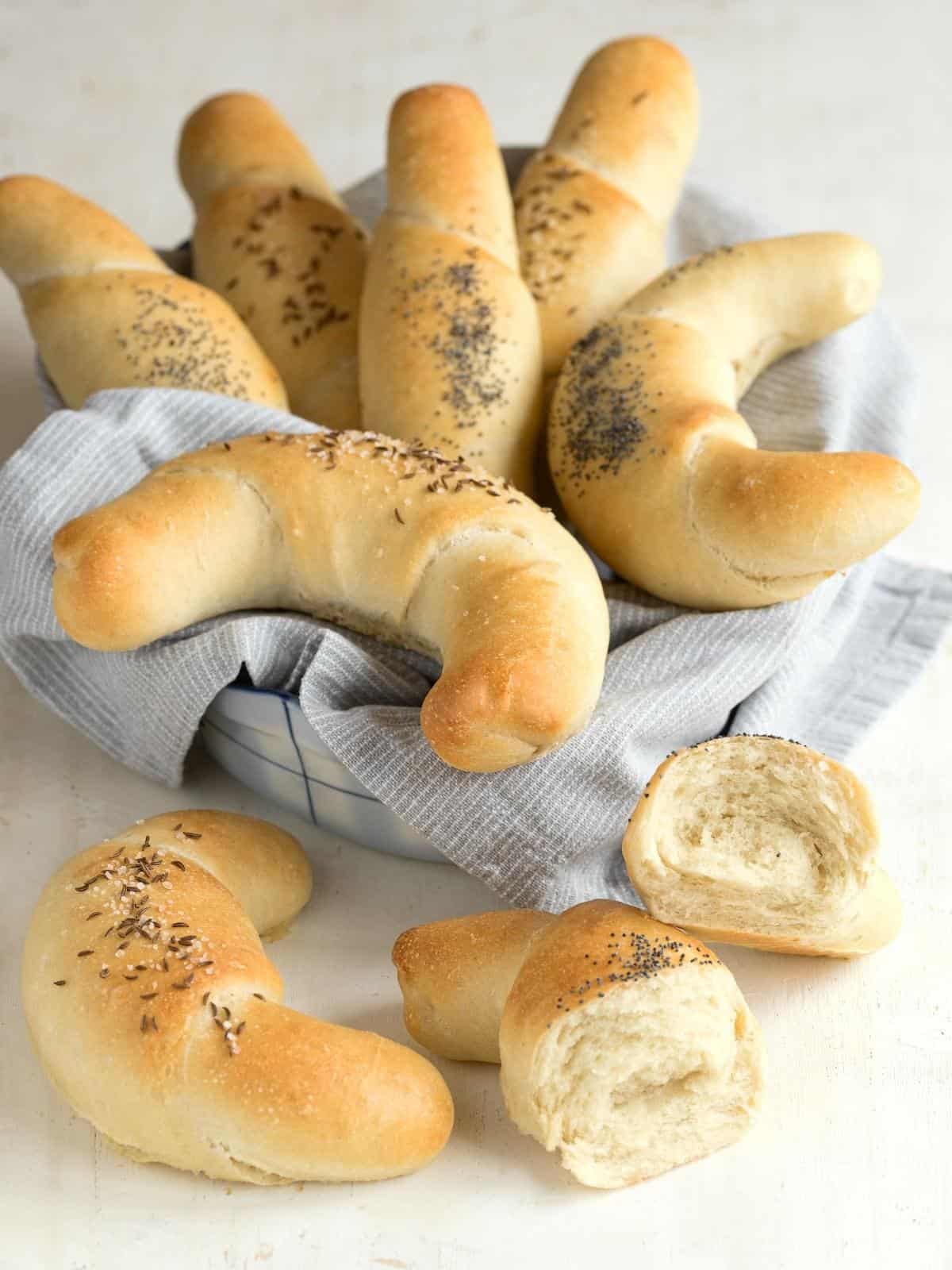
This is a new version of the rohliky recipe, posted in February 2023. The original recipe, published in January 2021, can be found HERE.
➜ What are Czech rohliky
Rohlik is a type of white bread that can be straight or crescent-shaped, and it is probably the most common pastry in any Czech grocery store. The Czechs consume rohliky (plural) for breakfast, snacks, or a quick dinner.
Rohliky rolls are best served fresh with butter. Add jam or honey if you have a sweet tooth. Simply top your rolls with salami, ham, or a slice of cheese to make them savory.
The crust of a well-made rohlik is golden and crispy, while the inside is super soft and spongy. The top is dusted with coarse salt, caraway seeds, or poppy seeds. Some rolls have no sprinkles on the surface for those who prefer a more neutral flavor.
Homemade, freshly baked rohlik tastes delicious with this garlic cheese spread or sardine spread.
Rohlík is also a perfect accompaniment to Czech deli-style salad with mayo, Pochoutkový salát.
➜ Pronunciation
If you are wondering how to pronounce the word "rohlíky", I have recorded a short audio clip for you. I'm a native speaker, so you will hear Czech firsthand!
➜ Ingredients
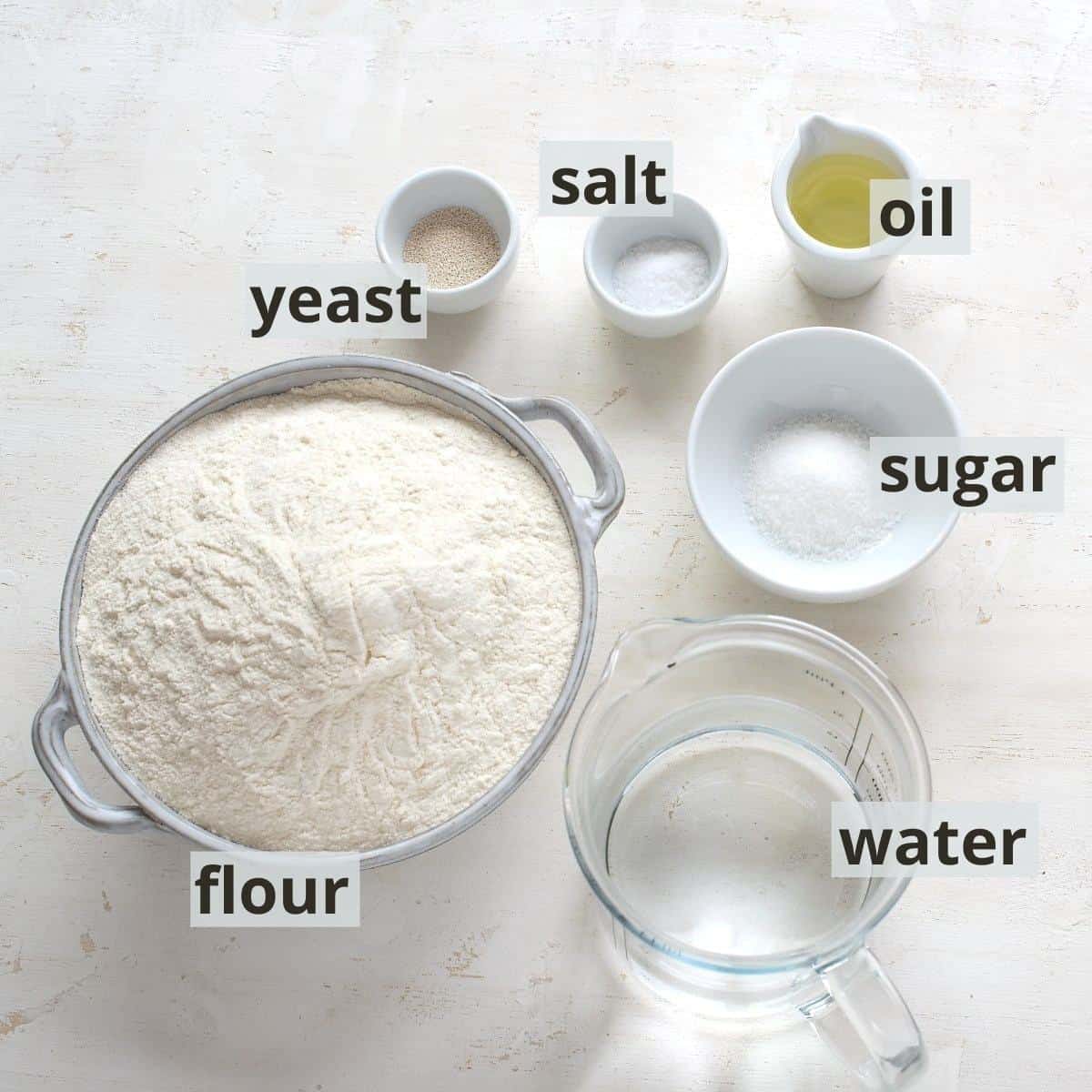
To make Czech rohliky, you will need the following:
- Warm water; no milk, please
- Active dry yeast; or fresh. I have had equally good results with both types of yeast.
- Sugar; a little, to activate the yeast
- All-purpose flour
- Salt
- Oil; either sunflower or canola. If you have access to pork lard (sadlo), feel free to use it instead of oil. The lard should be soft, not stiff, just out of the fridge. The fat will take care of the softness of the rolls.
Sprinkles: whole caraway seeds mixed with salt, or whole poppy seeds
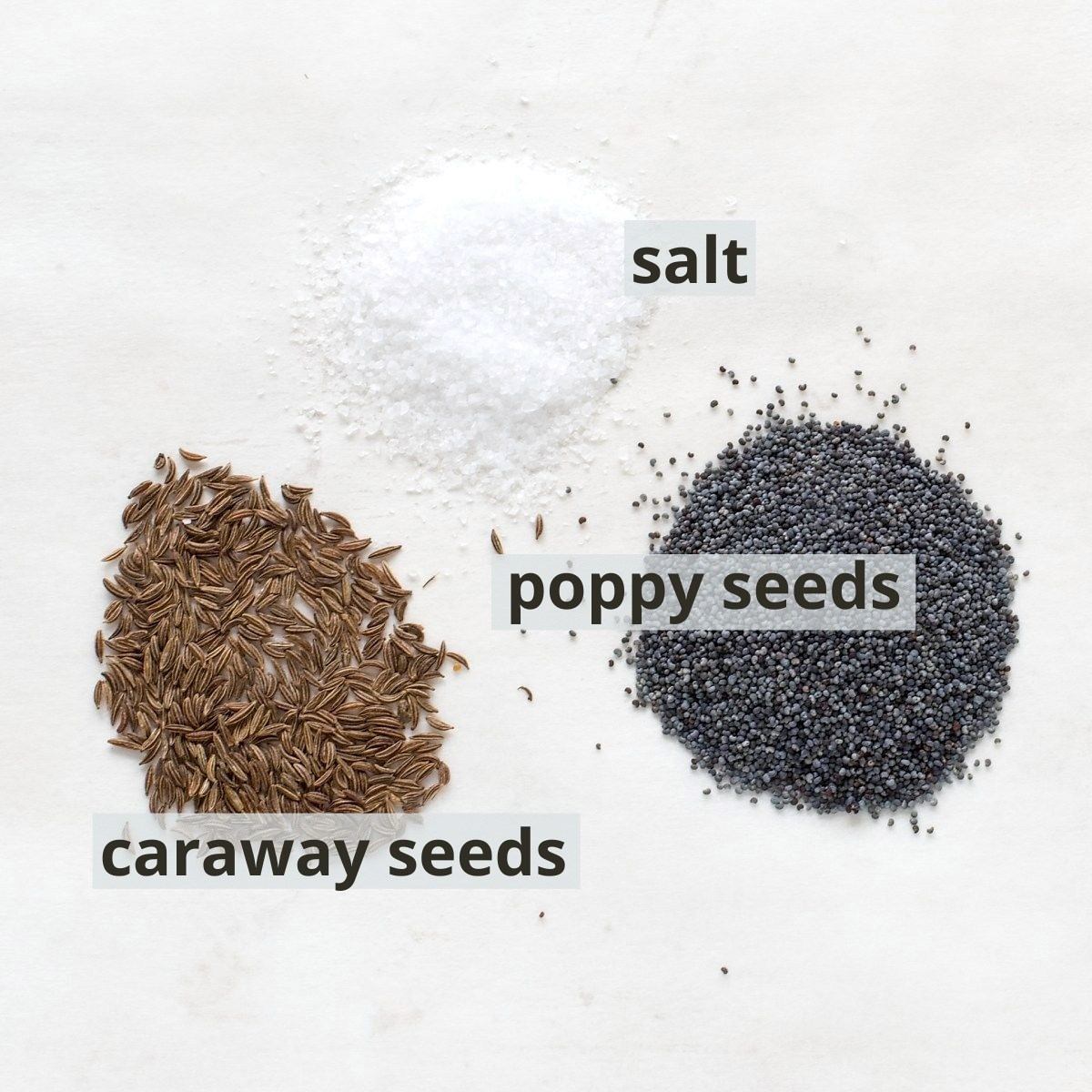
Next, you need water, or water mixed with a little egg, to brush the rohliky rolls.
Note on recipe: There are several recipes for Czech rohliky. This one is special because it is made with double-raised dough. Such a procedure ensures that the roll is very soft and does not dry out so quickly.
➜ How to make rohliky
The exact amounts of ingredients for the first and second yeast dough, as well as detailed instructions, are listed on the recipe card at the end of this article.
STEP 1: First yeast dough: Dissolve the sugar in lukewarm water. Put the flour in a bowl and mix it with the dried yeast, or crumble in the fresh yeast. Pour in the sweetened water and mix to make a thicker mixture. Leave it in a warm place to rise for 45 minutes.

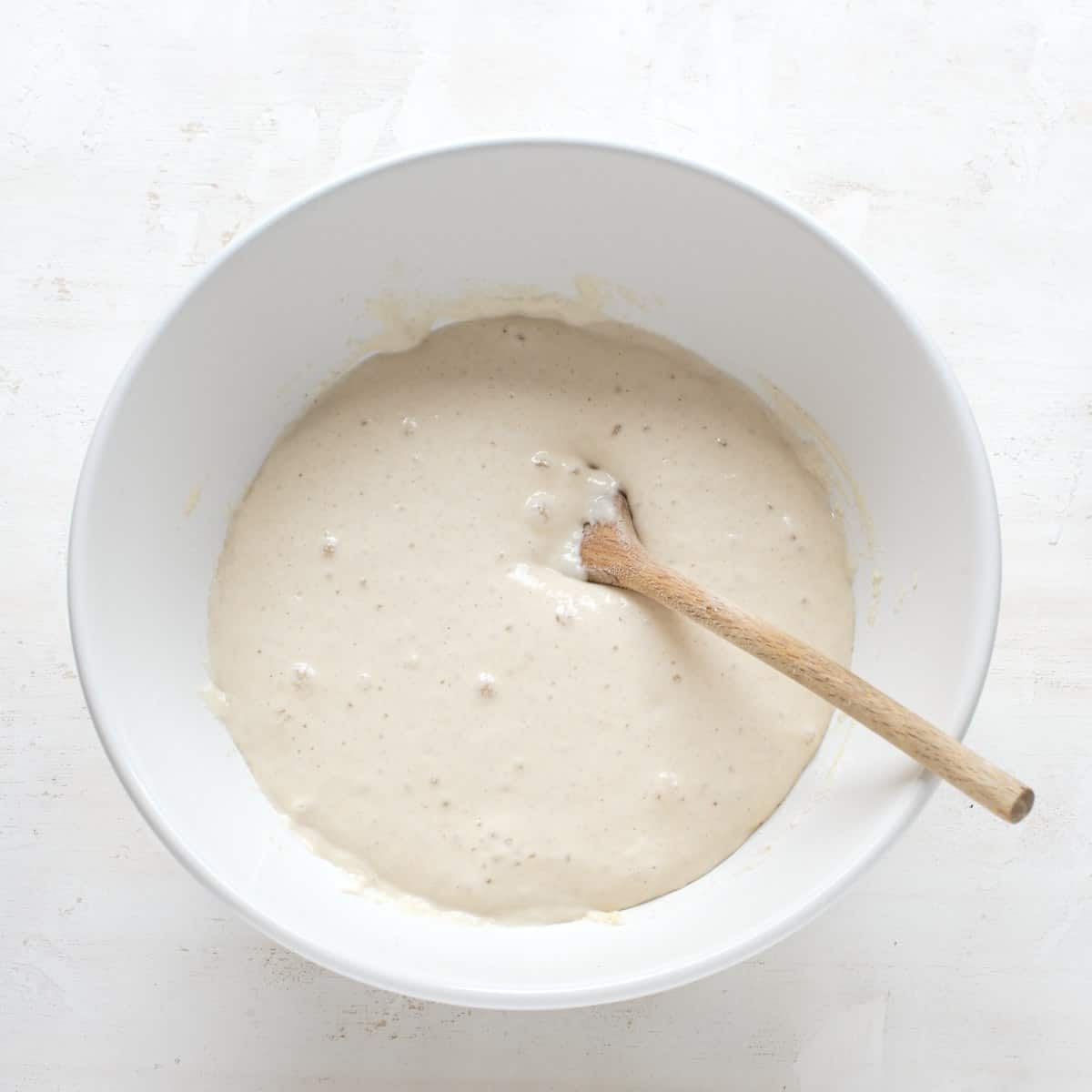
⤍ Learn how to make dough rise in the oven.
STEP 2: Second yeast dough: After 45 minutes, add oil, salt, and remaining flour to a bowl with lukewarm water. Mix first with a wooden spoon, then turn the mixture out onto a work surface and work by hand into a soft, elastic dough. If too sticky, dust it with a little flour and incorporate it into the dough.
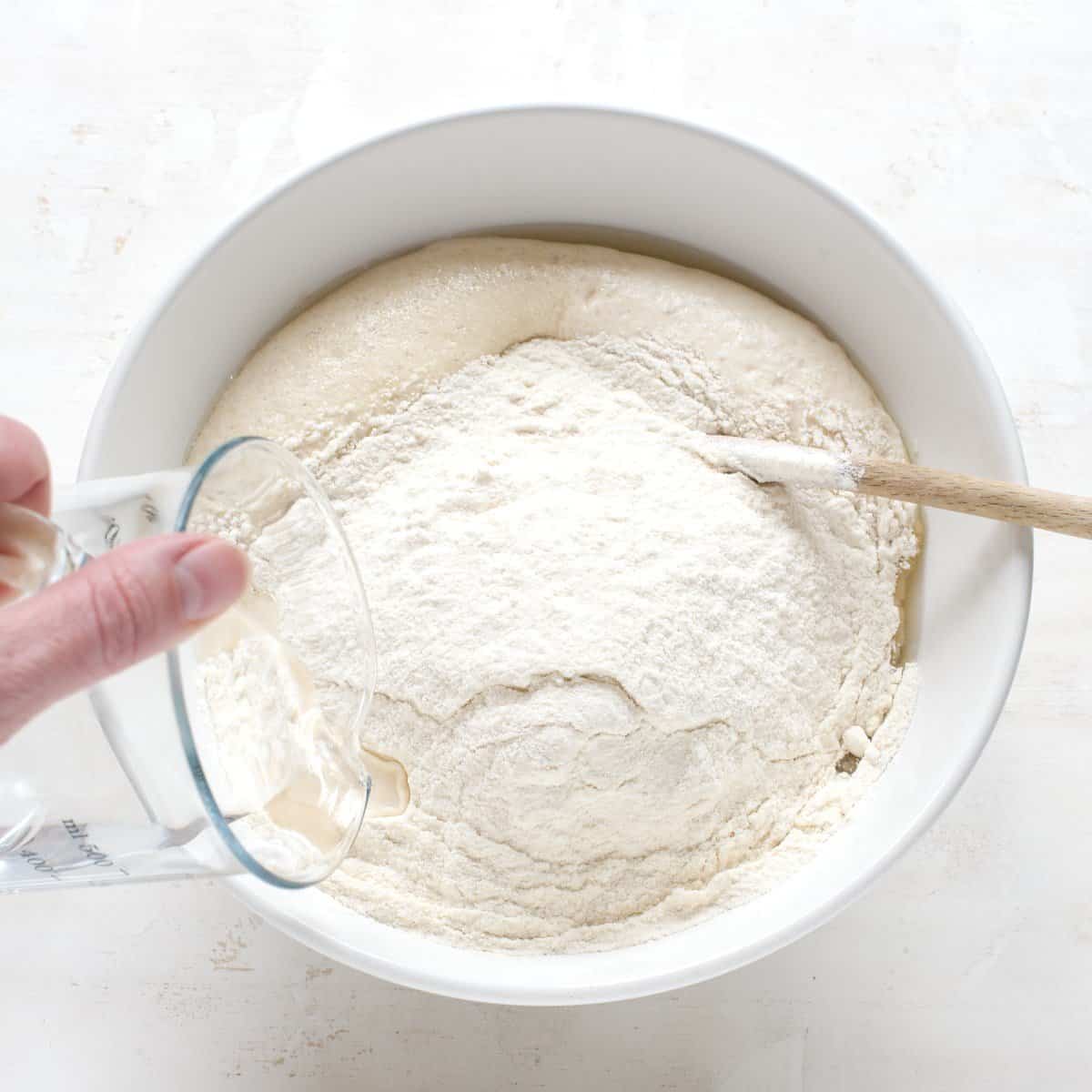
Allow the dough to rise for another hour, or until it has roughly doubled in volume.
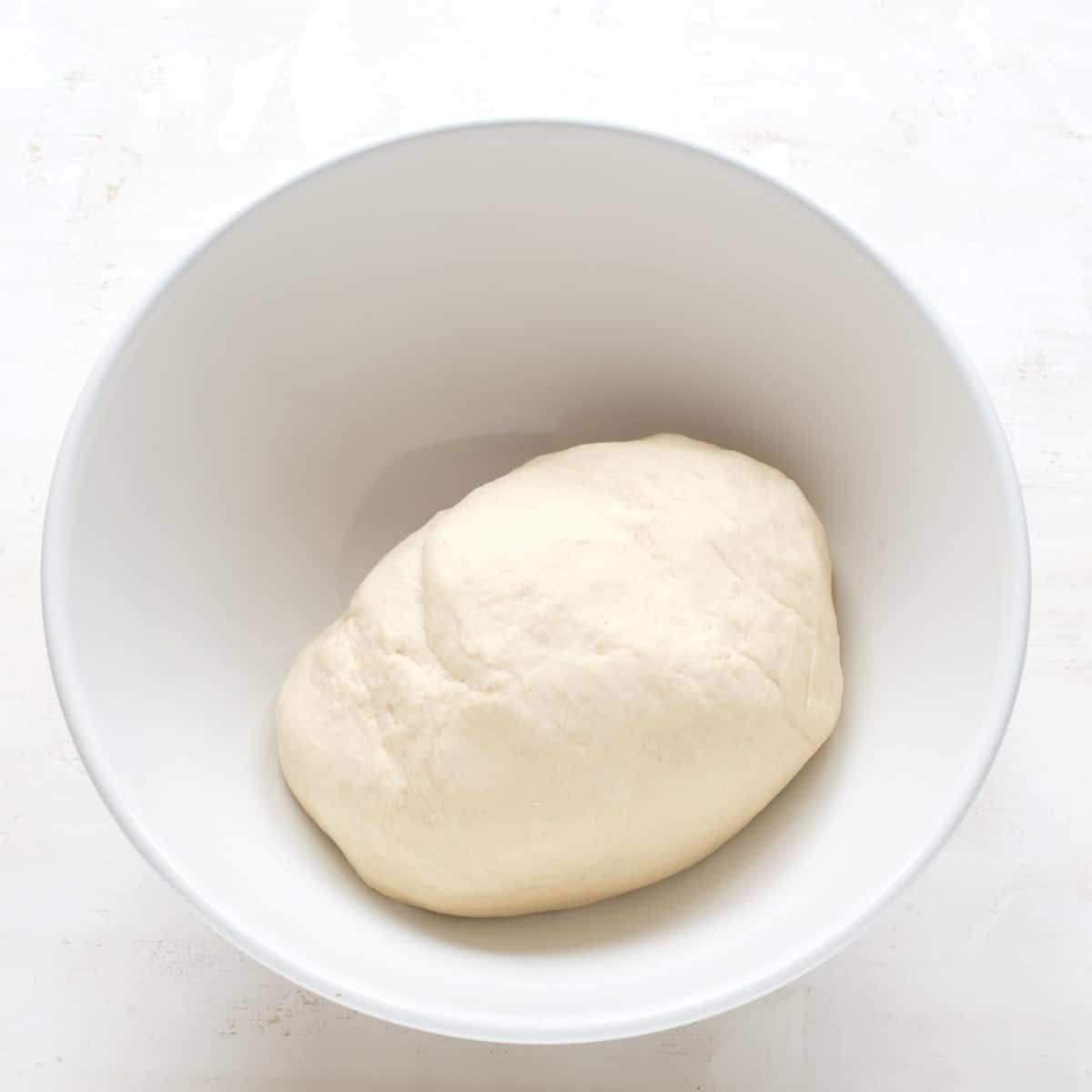
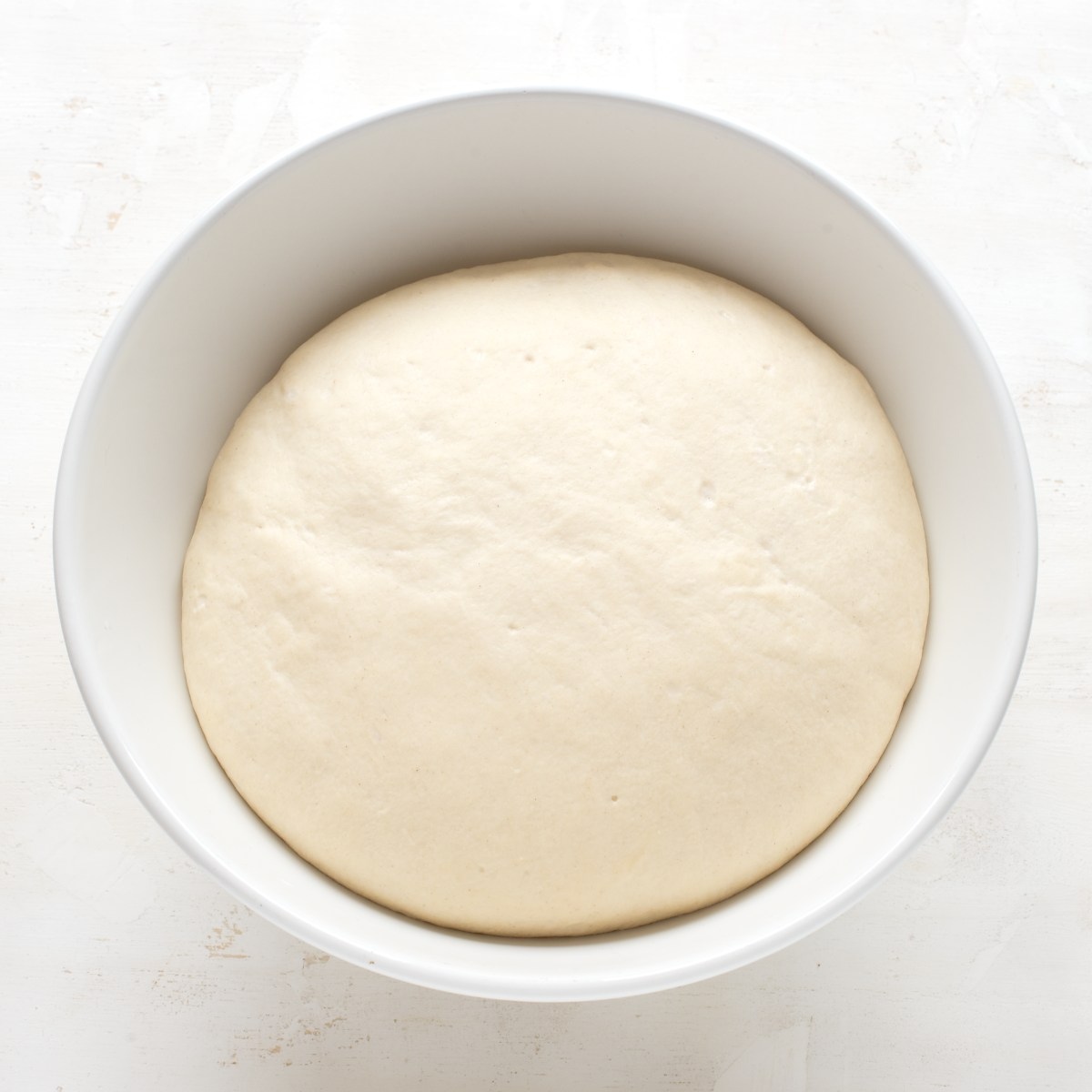
STEP 3: Divide the raised dough into two halves. Roll each with a rolling pin into a thicker 12-inch pancake, then divide it into four parts—triangles. Roll out each triangle a little more, and from the wider side to the tip, roll it up. Place the rolled rohlik, tip down, on a sheet lined with baking paper.
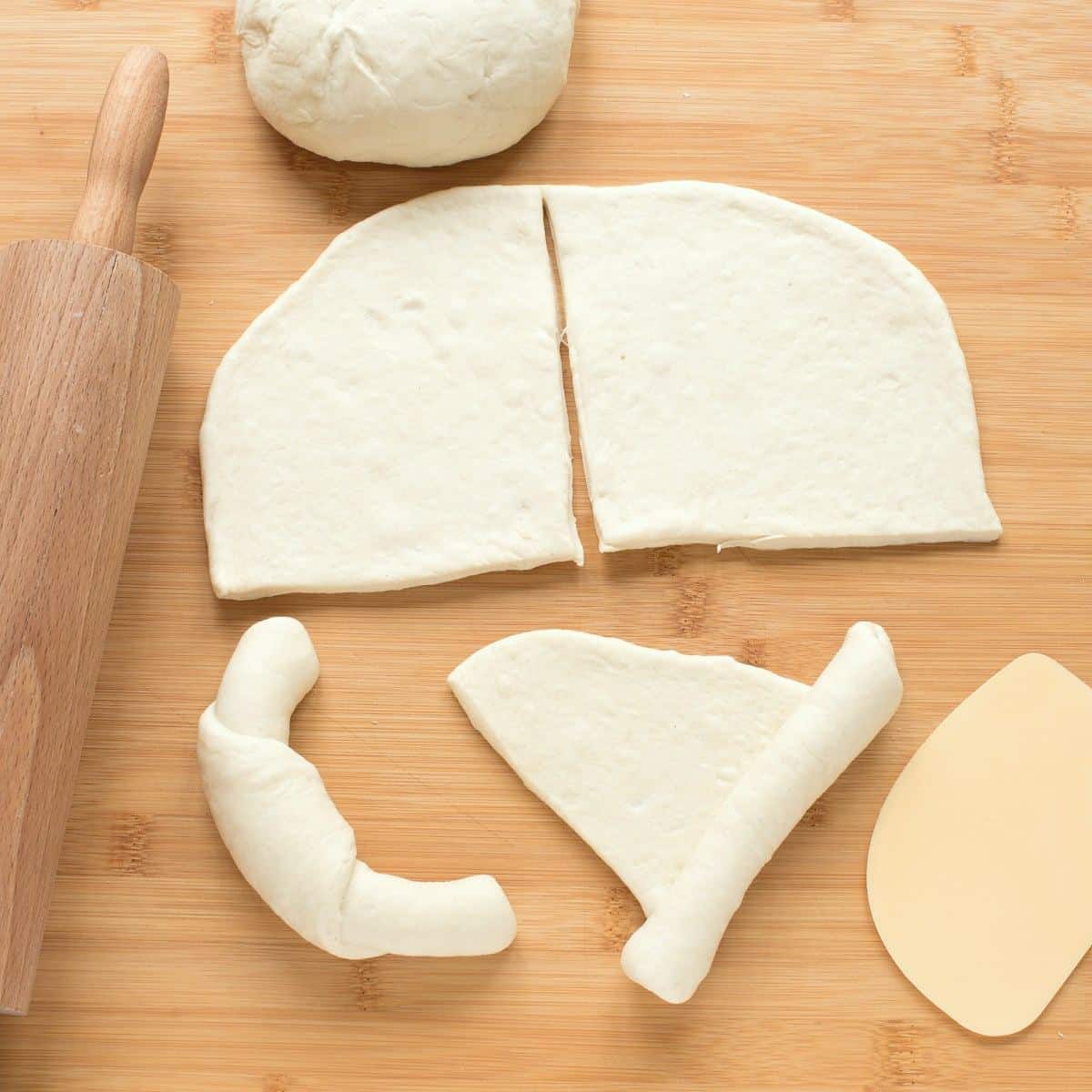
TIP: If you like, bend the rolls slightly into a crescent shape.
STEP 4: Continue until all of the rohliky have been rolled up. Place them on a baking sheet and allow to rise for another 30 minutes.
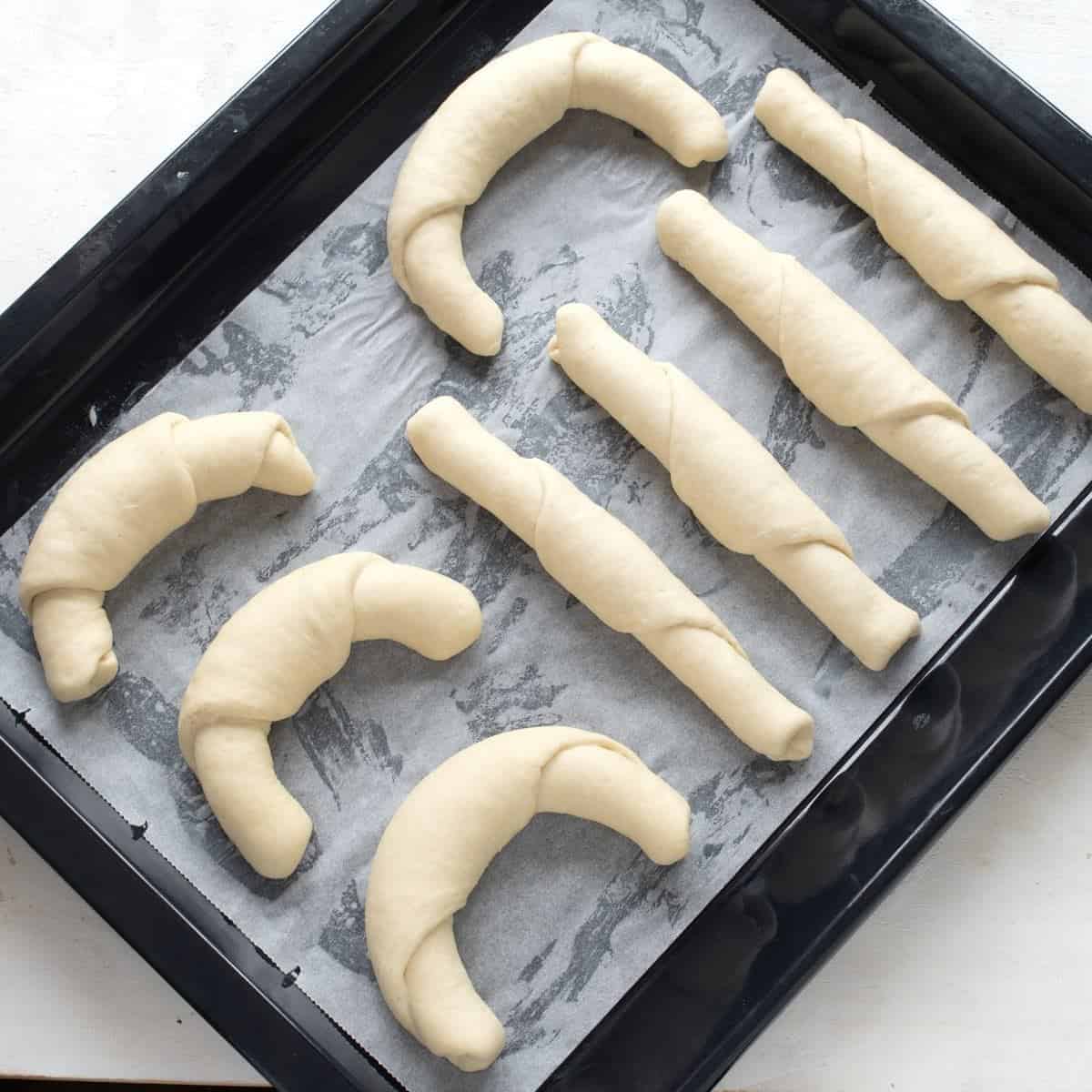
STEP 5: Brush the raised rolls with egg wash, consisting of water whisked with a bit of egg. Sprinkle the middle of the rolls with toppings: poppy seeds, caraway seeds, salt, sesame seeds, or flax seeds.
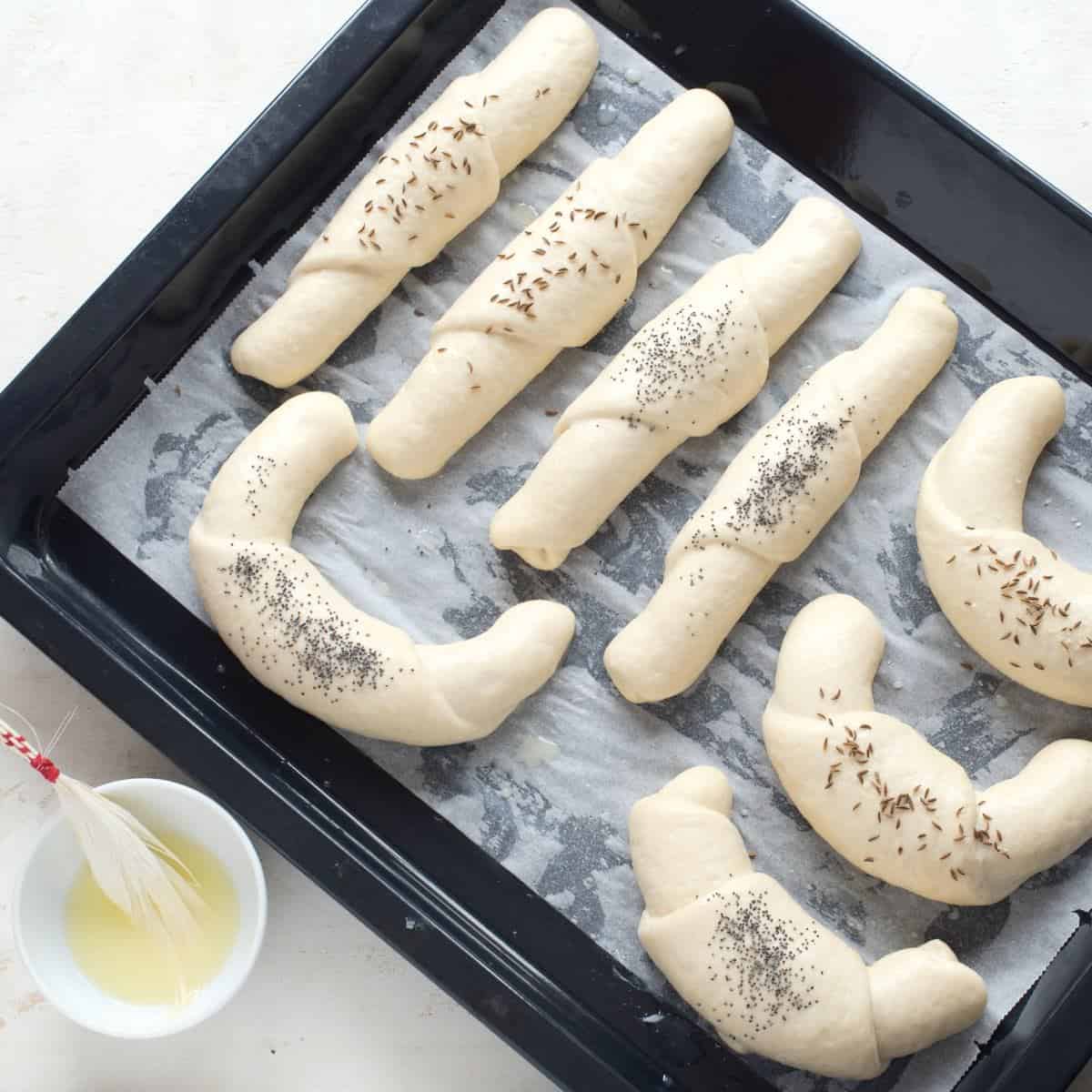
STEP 6: Heat the oven to 450°F (230°C), with the dials set to lower and upper heat. Bake the rolls for 10–13 minutes, until the surface turns golden brown.
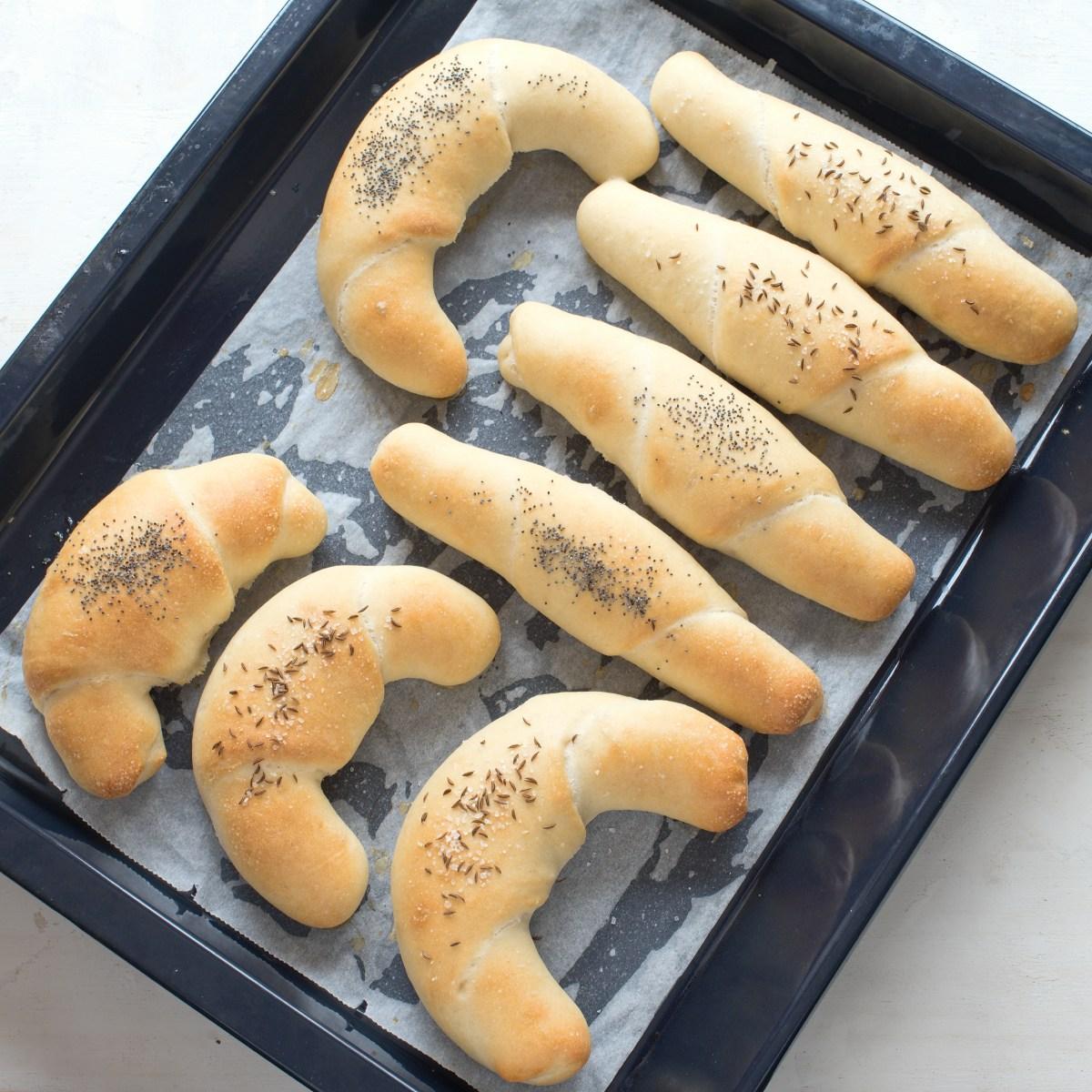
➜ Serving
The baked rolls are delicious for breakfast or as a snack, topped with butter and jam, as well as covered with cheese, ham, or some tasty spread. The rolls are delicious as a side dish, especially with any hearty soup or roast meat. You can cut the rolls into rounds and serve them as finger food (Czech jednohubky) at parties and family gatherings.
Cut older rolls into cubes and use them to make bread dumplings or bread croutons for soup. Grind the well-dried rolls into homemade breadcrumbs.
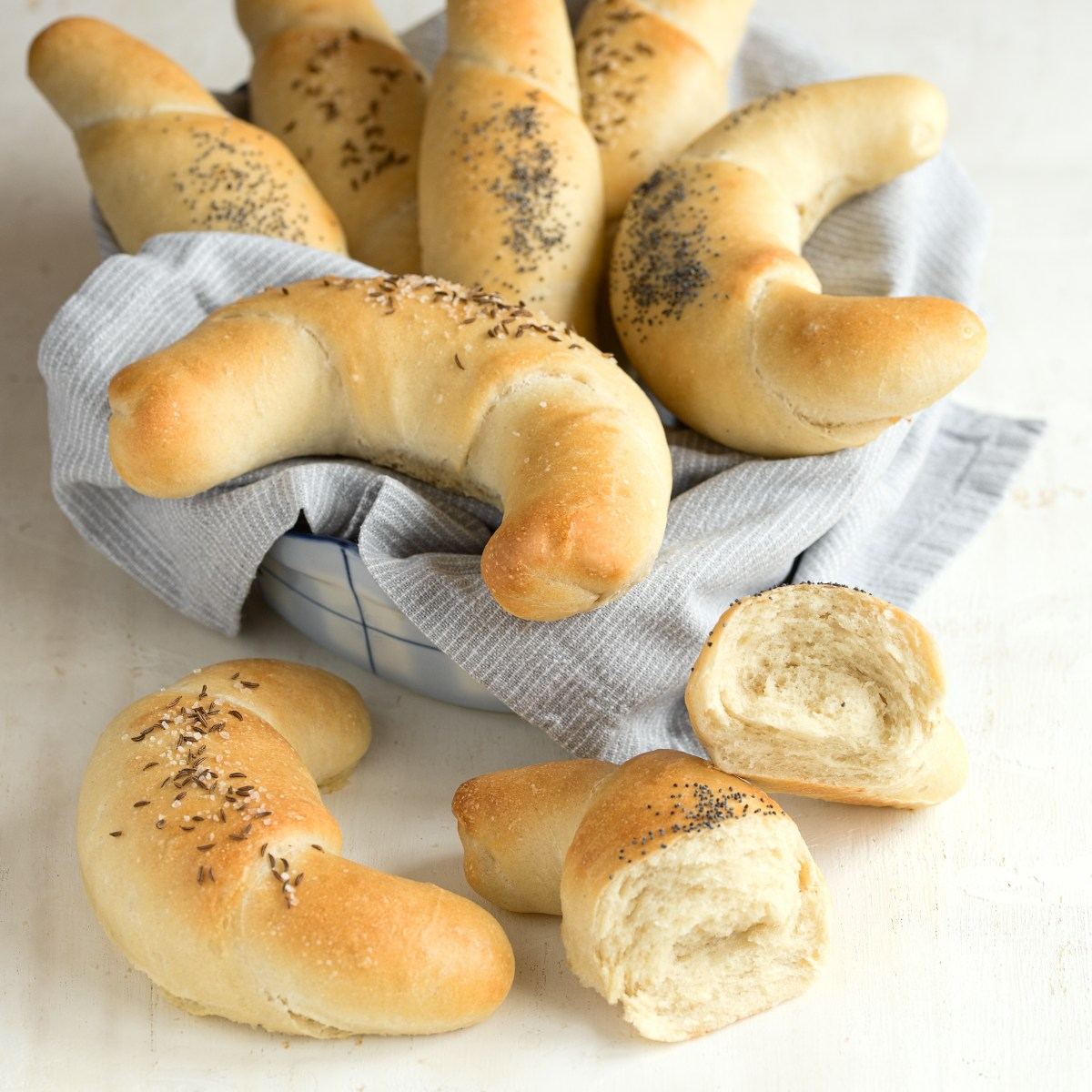
➜ Storage
Fresh rohliky taste best the day they are baked. On the other hand, these rolls are better than regular ones because they stay fresh longer.
Wrap them in a cloth towel or place them in a plastic bag.
Rohliky rolls also freeze perfectly. After baking and cooling, place them in the freezer as soon as possible. They will taste freshly baked when you take them out of the freezer and thaw them. Freeze them in resealable plastic bags.
More Czech bread recipes:
- Veka bread – perfect for Czech open-faced sandwiches (chlebicky)
- Housky braided rolls
- Czech rye bread
- Onion bread rolls
Tried this recipe?
Leave a review down in the comments! ⭐⭐⭐⭐⭐
Follow me on Facebook and Pinterest. Subscribe to my newsletter. Send me any question about Czech cuisine to my e-mail. I love hearing your feedback!
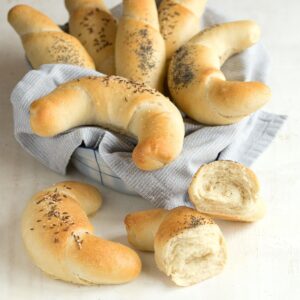
Rohlíky Czech Bread Rolls
Ingredients
First yeast dough:
- ½ cup warm water (120 ml)
- 1 teaspoon granulated sugar
- 1 teaspoon active dry yeast or 15 g fresh yeast
- 1 cup all-purpose flour (130 g)
Second yeast dough:
- 2 Tablespoons oil canola or sunfloer
- 2 teaspoons salt
- 3 cups all-purpose flour (390 g)
- ⅔ cup warm water (160 ml)
Sprinkles:
- salt, caraway seeds, poppy seeds to your taste preferences
Egg brush:
- ¼ cup water lukewarm
- ¼ egg
Instructions
- First yeast dough: Dissolve the sugar in lukewarm water. Put the flour in a bowl and mix it with the dried yeast, or crumble in the fresh yeast. Pour in the sweetened water and mix to make a thicker mixture. Leave it in a warm place to rise for 45 minutes.
- Second yeast dough: After 45 minutes, add oil, salt, and remaining flour to a bowl with lukewarm water. Mix first with a wooden spoon, then turn the mixture out onto a work surface and work by hand into a soft, elastic dough. If too sticky, dust it with a little flour and incorporate it into the dough.
- Allow the dough to rise for another hour, or until it has roughly doubled in volume.
- Divide the raised dough into two halves. Roll each with a rolling pin into a thicker 12-inch pancake, then divide it into four parts—triangles. Roll out each triangle a little more, and from the wider side to the tip, roll it up. Place the rolled rohlik, tip down, on a sheet lined with baking paper.
- Continue until all of the rohliky have been rolled up. Place them on a baking sheet and allow to rise for another 30 minutes.
- Brush the raised rolls with egg wash, consisting of water whisked with a bit of egg. Sprinkle the middle of the rolls with toppings: poppy seeds, caraway seeds, salt, sesame seeds, or flax seeds.
- Heat the oven to 450°F (230°C), with the dials set to lower and upper heat. Bake the rolls for 10–13 minutes, until the surface turns golden brown.
Notes
- Makes 8 rohliky rolls.
- SERVING: The baked rolls are delicious for breakfast or as a snack, topped with butter and jam as well as covered with cheese, ham, or some tasty spread. The rolls are delicious as a side dish, especially with some hearty soup or roast meat. You can cut the rolls into rounds and serve them as finger food (Czech jednohubky) at parties and family gatherings.
- STORAGE: Fresh rohliky taste best the day they are baked. On the other hand, these rolls are better than regular ones because they stay fresh longer. Wrap them in a cloth towel or place them in a plastic bag.
- FREEZING: The rohliky also successfully freeze. After baking and cooling, place them in the freezer as soon as possible. They will taste freshly baked when you take them out of the freezer and thaw them. Freeze them in resealable plastic bags.
DISCLAIMER: Because I come from Central Europe, my recipes are based on metric units such as grams or milliliters. Check out how I convert metric units to the U.S. system:
Conversion chart


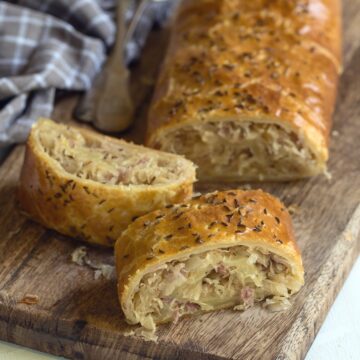
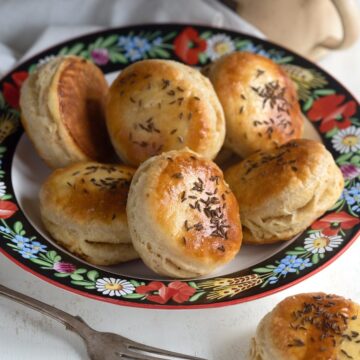
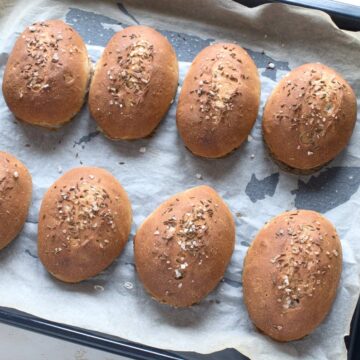
Alexandra
Hello,
I think it would be fun to bake this bread to share at work! Thanks for sharing the recipe! Could I freeze the bread and then bake it from frozen, or would you recommend letting the shaped rolls rise on the counter first? Thanks!
Petra Kupská
Hello Alexandra, thank you for reaching out. Unfortunately, I have no experience with freezing unbaked rohliky rolls. However, what does work well is to freeze FRESHLY BAKED rohliky (right after they cool down). They are amazingly soft once thawed!
Laura
Thank you for the recipe! My grandfather's sisters would make these when I would visit in the summers. Your recipes bring back many memories. Looking forward to trying these and many others. 🙂
Betty
simple recipe to follow, just didn't like all the pop up ads. thank you
Petra Kupská
Thank you for your comment, Betty.
William Milan Uhlarik
Petra, when I saw your recipe for Rohlíky, my mouth started to water. LOL......... I think it has been over 30 years since I have eaten these delicious rolls. My mother and grandmother back home in Chicago used to make them all the time when they were alive, or we could buy them from the Czechoslovak bakeries in the old neighborhood. However, they were not sprinkled with fine white salt but a slightly coarser type of white rock salt that had a very slight crunch to it. I am so glad you also mentioned and posted your recipe for Pochoutkový salát (in Slovak we would call it Pochúťkový šalát) is delicious to spread and eat on Rohlíky. I moved to South Coastal Texas over 15 years ago. Later this month a cousin (sestrenica) from Wisconsin will be visiting. So, thank you very much for giving me ideas of some great meals to make when she visits. S Pánom Bohom.
Editra
Zitra utestuju Vase rohliky.Zrovna dnes jsem narazil na vasi stranku .Moc pekna a navic mate moc pekne fotky z Vasi pohlednice z Cech.Takove fotky z meho rodiste jsem jeste na internetu nenarazil.Jste sikovna a preju Vam dalsi uzpechy s Vasema strankama. Ed
Anicka Cooklikeczechs.com
Dekuji Vam za mily komentar a jsem moc rada, ze se Vam stranka a fotky libi. Hodne stesti se zitrejsimi rohliky!
Pat Myers
Could you please explain step #7. “Dials set to upper and lower heat”. I’m confused I want desperately make these. They are a wonderful memory from my childhood as a member of Sokol Tyrs in Cleveland, Ohio!
Viteslav Ksenak
Mine did not turn out. The first step is not like your picture a liquid mix but rather a solid ball of dough. It did rise to double the size but when I added the Ingredients for the second rise there just was not enough moisture to absorb all the flower and make a smooth dough. Where do you think I went wrong?
Anicka Cooklikeczechs.com
Dear Viteslav, I am so sorry to hear about your experience with making rolls. The density of the yeast starter is affected by the type of flour - some are more absorbent, then you need to add more liquid.
Viki
Rohliky dopadly vyborne; mnohem lepsi nez babisaky. Bydlime v Anglii, a kdyz prijedeme do Prahy za babickou, kluci (6 a 12) rohliky kazdy den a jeste si vezeme pytel zpet. Urcite je zase upeceme, jen se musime zdokonalit v rolovani. Diky moc!
Petra Kupská
Ó děkuji za tak milý komentář! Rolování kluci zvládnou, myslím, že taková činnost by je i mohla bavit. Moc zdravím z Čech!